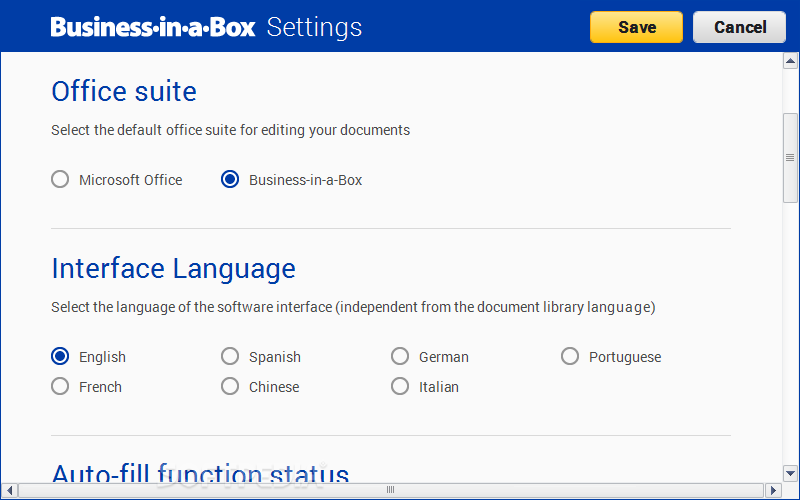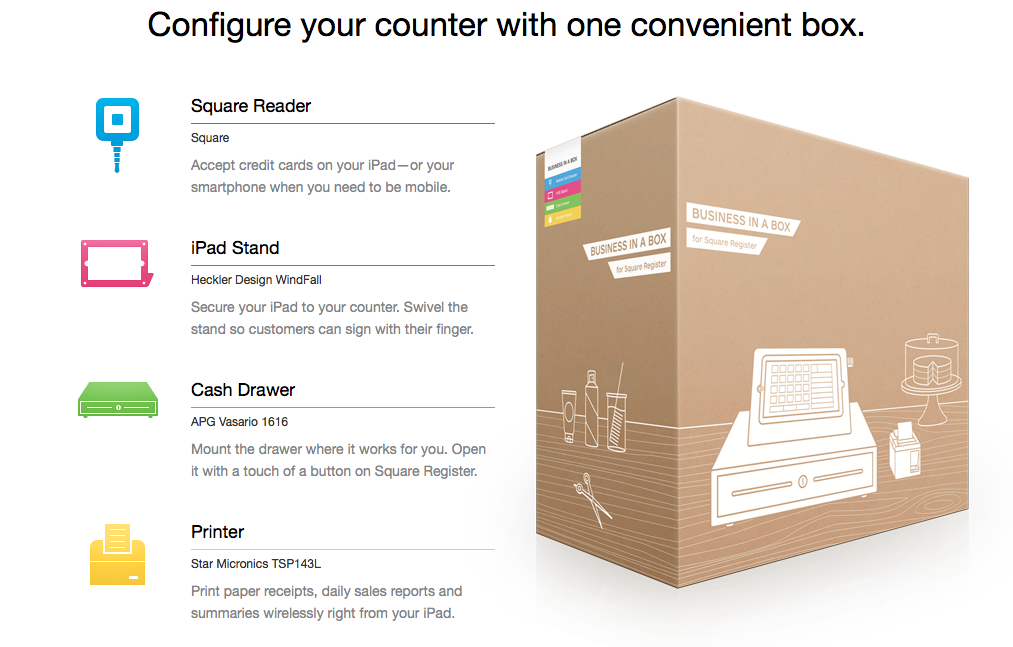I have been using Business-in-a-Box for over 9 years and the service that I have received so far has been exceptional. When ever there is a problem and I contact them directly, the staff are very helpful and courteous. The documents on Business-in-a-box are always updated and cover every type of business. Save over $3,000 a year with the new Business in a Box. Call Cable Bahamas Business Solutions at 601-8911 to sign up your business!
The concept of “two-in-a-box” leadership has been examined extensively over the past few years. One of the most thorough discussions is in the HBR article The Leadership Team: Complementary Strengths or Conflicting Agendas. CEO/COO teams or “Office of the President” arrangements can offer great strengths, but may also introduce some sizeable risks, as Stephen A. Miles and Michael D. Watkins conclude.
In our own company, Fishbowl, we took the approach to a new level 2 ½ years ago. We create leadership teams not only for our top jobs, but for every management position in the company.
A bit of background: Fishbowl is the result of a somewhat rocky beginning. We became involved with the company, which produces inventory software, in 2004 when one of us (David) was sent by the prior majority investor to shut the fledgling company down. Instead, seeing the potential in the product and commitment of employees, we came up with financing to buy out the investor and keep the company operating. By the end of 2006 we had created the #1 most requested inventory software for use with QuickBooks and were solidly profitable.

After several years of solid operations, in January of 2010 we decided to put together pairs of people for all management jobs. We did this for several reasons: We knew that maintaining our exceptionally high growth rate would be increasingly difficult and wanted to prepare leaders from within to address those new challenges. We wanted to put our highest focus on the development of our people, and to cultivate their highest creativity and thinking, in addition to our focus on the development of our product and sales.
A lot of people thought we were crazy. Soon after we made the move, the economy was deep into the recession, and most companies had to reduce headcount to cut costs. Instead, we were adding managers and creating intentional redundancies. How could we justify it?
In fact, in our experience, the benefits of our approach have exceeded the not inconsequential costs. Here are just a few of the upsides:
•No hierarchy. We’ve flattened everything out. Every person is a leader, paired with another and supported by a team.
•Personal growth. We’ve allowed twice as many people to have leadership opportunities – an inherent succession plan that has resulted in strong employee growth in addition to company and revenue growth.
•More creative outcomes. We’ve chosen our pairs carefully – we align paired leaders for maximum contrast in thinking and analytical styles. For example, our product management leads include one partner who is “left brained” and one who is “right brain” dominant. One is linear in his style; the other creative. The result is a manifestation of true synergy.
Are there disadvantages to paired leadership? In the initial stages, yes:
•Tapping two people to fulfill one role requires a lot of resources. There’s no question our payroll is higher because of our paired leadership strategy. However, in our experience the creativity and testing that goes into every program or key decision creates a net savings over the longer term.
•Some of the individuals who get paired don’t particularly like each other. We had an instance like this. We have a culture where people are very open (though not disrespectful). Two of the key individuals we partnered cornered us with persistent questions. What if we can’t agree? Who arbitrates? What if one partner is holding the other one back? Ultimately, they adapted. At present, it’s fair to say that if we changed the model, the majority of our team would be extremely disappointed, because they’ve come to appreciate the shared responsibility model.
•What about succession when the time comes that one of the teamed partners is promoted and the other is not, or one of the team members is gone? In our own company we have created a culture that is vastly different than the typical corporate environment. Our turnover is near zero. But when a leader does find his or her place elsewhere, we still have a leader in place. We can develop and assign a new partner and we generally don’t miss a beat.

One of the greatest benefits of paired leadership that Fishbowl enjoys is that a trusted partner can provide essential feedback that helps to keep egos and guesswork in check.
We also believe that what we call the The Five Non-Negotiables must be present for a paired leadership program to work: Respect, belief, trust, loyalty, and commitment. We test all decisions against these characteristics. Paired leadership is so fundamental to our management style we would never consider going back. Two really good leaders – together – produce great outcomes consistently. Our company is thriving, and we have personally fulfilled employees who produce out-of-the-box initiatives every month. Perhaps it could work for your business as well. We welcome your thoughts.
Box is a popular cloud-based content management system (CMS) that lets users share, store, and manage documents, presentations, and videos from anywhere, at any time. The solution suits businesses of all sizes from different industries.
Top 5 recommended alternatives to Box:
It offers content management, mobile access, online workspaces for collaboration, administrative control, and integration with popular applications such as Slack, Google Apps, DocuSign, Salesforce, and NetSuite. Box works on both Android and iOS devices.
Though Box offers numerous features, users said that its website development and blog creation features left them wanting for more. If you were considering Box as the primary CMS for your business but think that these features are vital, you’re better of with alternate solutions that offer these features.
We curated this guide of the top five user-recommended Box alternatives to help buyers choose a product that meet their CMS requirements. This guide contains details about features, deployment options, user feedback, and improvement areas of each solution.
1. Dropbox
Dropbox is a cloud-based platform that lets users share, store, and collaborate on files such as images and documents. The solution is suited for midsize and large businesses.
Users can share files with other Dropbox users in their organization as well as third-party users who don’t have a Dropbox account. Anyone can add their comments to the shared documents. However, if you want to restrict access to certain documents, you can centrally control the access using the advanced admin panel.
In addition to the common CMS features, Dropbox also offers the following key features:
- Dropbox Paper: It’s a free product for all Dropbox customers. Paper’s available templates let you create unlimited documents such as meeting agendas, minutes, and task assignments. You can connect Dropbox Paper to your calendar to link the documents for easy access during meetings. This feature also lets you link or embed a Dropbox file or folder in a Paper doc.
- Dropbox Showcase: This feature is offered in the Dropbox professional plan. It allows users to add branding to their shared files. Users can add visual previews, customize the layouts, and add captions. They can also automatically track who views, downloads, and comments on the shared files.
We analyzed user reviews of Dropbox to understand what users like and the areas where they think it needs some improvements.
What users liked:
- The ease of use in sharing files with third-party users, managing the permissions, and the ability to protect files with passwords.
- Features, such as “add to my Dropbox”, which allow users to directly add files to their Dropbox space. The Smart Sync feature lets users easily sync all their accounts on multiple devices.
- The Business Account free trial that allows users to test the software before purchasing it.
Users would like to see:
- More storage in the free basic account as currently, users have to upgrade to the Plus account for more storage space.
- A more responsive customer service support team. Also, the agents should be better informed about the features.
- Fewer push notifications that urge them to convert to paid plans. Users feel that Dropbox is constantly bombarding them with such communication.
- Better file versioning and storage capabilities. Users want the changes in their files to be quickly updated.
2. Drupal
Drupal is a free and open source software that lets users create and manage their websites. The software is written in PHP, so users would have to download the code beforehand.
Drupal lets you create blogs, corporate or ecommerce websites, portals, and social networking pages. The software facilitates collaborative authoring, content management, peer-to-peer networking, as well as file uploads and downloads.
Drupal is suitable for small and midsize businesses (SMBs). In addition to the common CMS features, here are some of the key features that Drupal offers:
- eForms: This module lets users create front-end forms with defined fields. The forms can be integrated into websites and used to create customer surveys, petitions, and personalized contact forms. These can be used to mobilize people for social causes, gather contact data, and collect customer feedback.
- Video content: While many CMS solutions offer video modules, Drupal’s API allows users to convert videos and create thumbnails. Users can upload videos, play the video files, and embed the files to the node body using the WYSIWUG module. This offers greater flexibility to add video content to users’ websites.
We analyzed user reviews of Drupal to see what users like and didn’t like about the software. Here are the details:
What users liked:
- The ease of use, as one can configure the website features without modifying the source code. Users can access all the codes, which are publicly available and have been contributed by—and for—the community.
- Ability to choose the content type and pick specific features related to each type.
- The software’s layered structure that supports change very well. The core technology and modules are available for free and there’s no license fee.
Users would like to see:
- More fashionable, simpler, and professional themes. The free themes aren’t pleasing to all users and it takes a lot of time to modify the templates.
- Better documentation for major feature releases so that new users don’t encounter challenges in understanding the updates.
- Improved functioning to eliminate downtime whenever the vendor adds new modules. Users feel that the software gets “buggy” in this situation.
3. Microsoft OneDrive
Microsoft OneDrive is a cloud-based tool that lets users collaborate, share, and store their documents. Users can access, review, and edit the documents in real time as well as restrict access. They can choose to be notified when a file is viewed or edited.
The software also features smart search, which detects visuals that can be categorized and made easily searchable. OneDrive is suitable for SMBs.
In addition to the common CMS features, here are some key features of OneDrive:
- Document scanning: Users can scan and store paper documents, receipts, business cards, and whiteboard notes. The feature centralizes all the necessary documents in one place, making it easy for users. This eliminates the need for manual data entry and ensures that no important documents are lost.
- Expiring links: Users can add temporary links to files and photos that they share via OneDrive. These links can have an expiry date that prevents the misuse of documents as the links expire as soon as the receiver downloads the files.

We analyzed user reviews of Microsoft OneDrive to understand what users like and the areas where they think it needs some improvements:
What users liked:
- The optimum storage of 5 GB in the free plan suits the needs of SMBs that want cloud storage. Users also like the Premium package for its productivity features.
- The ease of use, as the software offers convenient navigation and secure sharing options via link sharing. Users also liked the automatic file sync and ability to easily retrieve their documents from anywhere.
- The responsive customer support. Users like that the tickets get resolved fast and are supported by trained and informed customer service agents.
Users would like to see:
- Better compatibility with Mac as users find it difficult to add files to their devices. They can’t easily troubleshoot and the error dialog does not refresh immediately, so they can’t be sure whether they’re doing the right thing.
- Limited file number that restricts storing heavy documents. Users would like to have the ability to automatically download files and convert them to zip files.
- Users would prefer to work on OneDrive without having to work on OneNote. They say that OneDrive and OneNote should be installed together for OneDrive to run smoothly. Users would also like to have a choice to not sync OneDrive folder to their computers.

4. Strapi
Strapi is a free and open source CMS. It offers content manager functionality to add, edit, and delete content (text and media). Users can add the content type structure in the fields to categorize content and customize the API to tweak the software to their needs.
Strapi is suitable for primarily SMBs.
Along with the common CMS features, here are a few key features of Strapi:
- Internationalization and localization: This feature ensures that the projects are adapted to different languages. Strapi detects user language preference and can translate the requested content. This way, users can read the content in their local language.
- Public assets: This functionality allows users to make certain project files (such as images, video, and CSS) accessible to the public. Every new project includes a folder named “./public”. This reduces the effort to manage access permissions and allows users to know in a glance whether an asset is public or restricted.
We analyzed user reviews of Strapi to understand its pros and cons. Here’s what users said about it:
What users liked:
- Customizable functionality such as the simple UI for the editors, configurable data model, and GraphQL. Users can add functionalities based on their needs.
- Beneficial plugins that help users stay organized and eliminate the need to rewrite API codes every time.
- The responsive customer support that fixes bugs quickly and swiftly releases feature updates.
Users would like to see:
- Simpler deployment on production servers, especially AWS and Heroku, to ensure ease of use.
- A comprehensive user guide for first-time users as the installation-to-execution process can be challenging to some users.
- Data version control and the ability to easily switch to the previous version for easy navigation and data security.
5. WordPress
WordPress is a web-based platform that allows users to create and manage their website. Users can publish content on websites without any programming knowledge. They can track website visitors and store as well as upload content (text, image, and videos). The tool also offers a social sharing feature and search engine optimization.
WordPress is suitable for SMBs.
Apart from the common CMS features, here are some key features of WordPress:
- Built-in comments: This feature offers users the ability to receive readers’ comments on the content. Users can moderate a discussion forum. This is a great mode to collect feedback from end readers on your blog and website content.
- Host importers: WordPress allows blog users to import their blog and website from Blogger, LiveJournal, Movable Type, TypePad, and Tumblr. This ensures that they don’t lose any data and can continue running their blog or website despite the transition.
We analyzed user reviews of WordPress to understand their likes and the software’s improvement areas. Here’s what they said:
What users liked:
- Easy installation as users have to fill a form and install WordPress on their website with just a single click.
- Flexibility and personalization of websites that lets users choose from various layout templates and customize these to their liking. Users can also add the available plugins.
- Ease of accessing support documents and the WordPress community that provides users the help they need.
Users would like to see:
- Ability to make changes to the web page. Certain changes to the website require users to know HTML, CSS, JavaScript, or PHP.
- Better website layouts in the basic plan. Users have to spend more money on purchasing layout modifying plugins.
- Guidance and support to choose plugins. Some plugins can clash with others and negatively impact the website. Therefore, users stick with mainstream ones that include minimal payment.
Next steps
Business In A Box Review
Before you invest in Box, you should check out its available alternatives. Evaluate the solutions we’ve listed here and compare the pricing, deployment options, features, and user reviews before shortlisting one for your business.
You can get additional information and read more user reviews about each solution here:
You could also compare other CMS solutions on Software Advice.
Business In The Box
If you’re interested in getting personalized assistance, reach out to our CMS advisors at (844) 680-2046 for a free phone consultation.